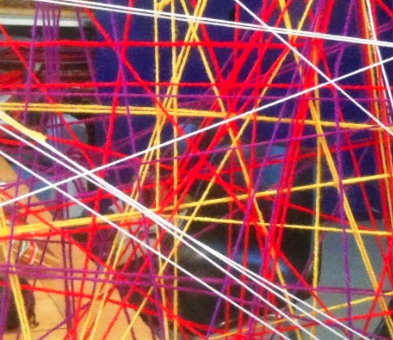I recently attended an intriguing discussion about “context” in mediation and how it should be ‘handled’ by a mediator. Frankly, I was a bit confused about the topic, since the term ‘context’ evoked to me the unique situation that emerges from any mediation session, but also a standardized characteristic set (such as commercial mediation, divorce cases, neighbor disputes, and the like). I was right, luckily – and the interesting thing I’ve learned is that the word comes from Latin contextus, that means waived together (cum + texere). This powerfully gives the idea of the various threads of a discourse, intertwining as long as the fabric is made.

This greatly fits with my reconstruction of the way a discussion unfolds in the course of a mediation session. Several lines of discourse start developing, as they touch the sensible points the parties have chosen to address. Around these connection areas (let’s call them ‘issues’, so it’s more familiar), each participant to the conversation takes position, i.e. sets him/herself in a manner consistent with his/her narrative. Positions are continuously readjusted, and also narratives inevitably be reconstructed, sometimes with dramatic changes.
In this scenario, a mediator role seems to have a twofold role: i.e. both as somebody who, from some distance, watches the loom going on, AND somebody who has his own threads mixed up with the parties’ ones, in the fabric. What really makes the difference is the kind of ideas the mediator has while watching the loom, and how he (consequently) places his own threads in the fabric. Let’s call it ‘approach’. One thing is for sure: whatever the approach, the context is modified thanks to the mediator’s interventions.
According to the ‘transformative’ approach, mediator’s interventions are basically aimed to support -in a non-directive way- the party empowerment (i.e. the process that can put every participant, in a position to have a clearer view of the situation, and take decisions accordingly – to have ‘agency’ in other words). This often may activate the somehow parallel process of so called ‘recognition’ (i.e. the ability a party has to better understand, and possibly connect with the other party/ies). Other approaches aim to different targets, as we all know. So, mediator-induced modifications to the context may vary greatly, according to the chosen approach.
All this seems quite accepted among specialists in the field. What is not so obvious, still, is the relevance of what we indicated above as” standardized characteristic set”, is. the context perceived as a special situation, having differentiating features in respect of other situations.
Whether useful or not in helping our mind in categorizing single episodes, and grouping them into distinct boxes, I came to the conclusion this way of interpreting the ‘context’, presents some serious drawbacks. It gives, in fact, justifications to those who think that a mediator in giving attention to the context, should better adapt his/her intervention to the context (instead of being consistent with the chosen approach). In other words, somebody (a large number of mediators and specialists, indeed) feels natural thinking of mediators as a sort of chameleons with the ability to set their threads in a certain way when confronted in an inheritance dispute, and in a (totally/partially, however) different way when in a workplace one.
The conversation I mentioned atop (an AMT Tea Break held on Apr 12, 2022) is a good example of how this way of reasoning may be pervasive even among who practice non-directively. You may have a look at it here (the conversation in held in Italian; subtitled are available in English though). Some further comments in Italian are available here.
